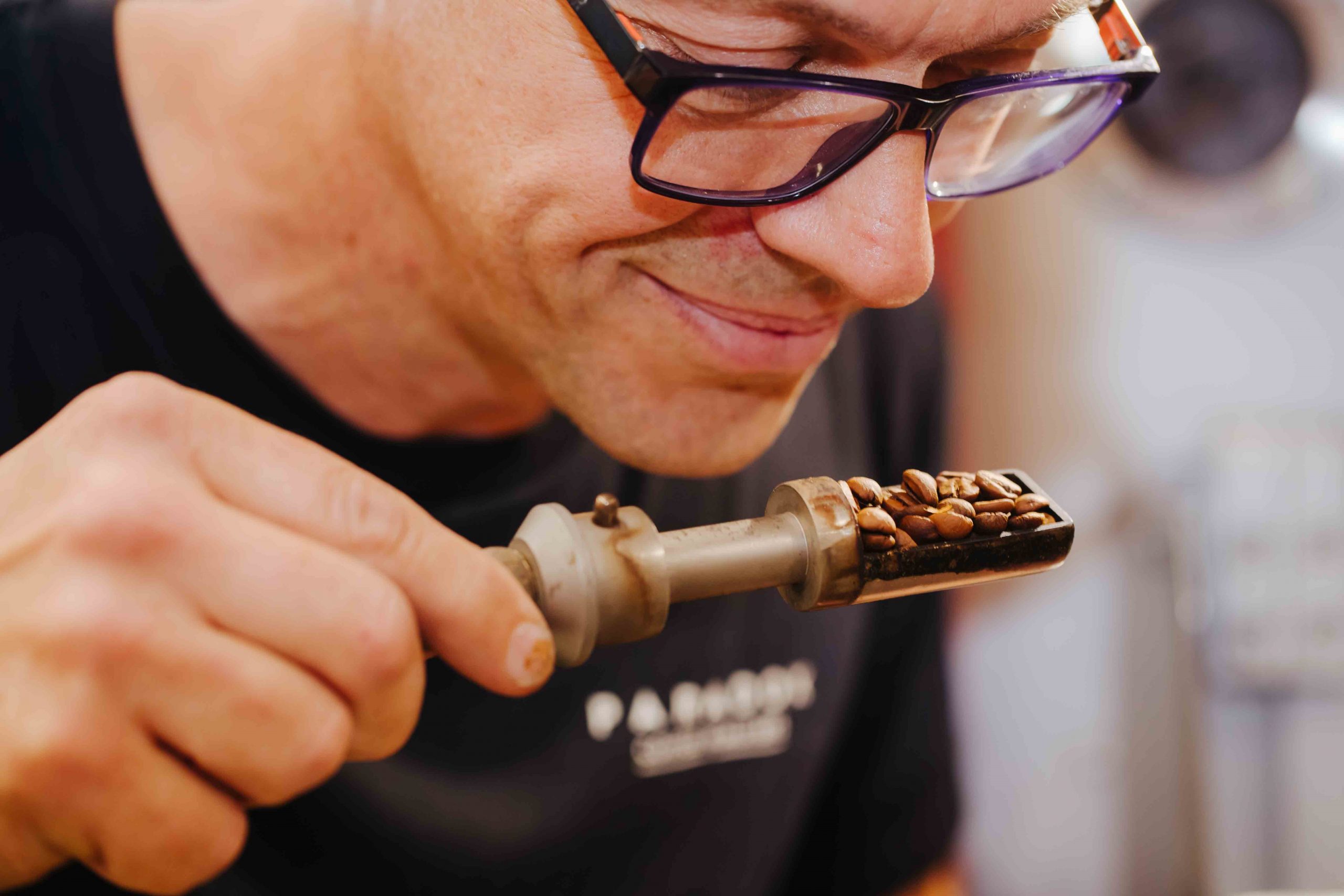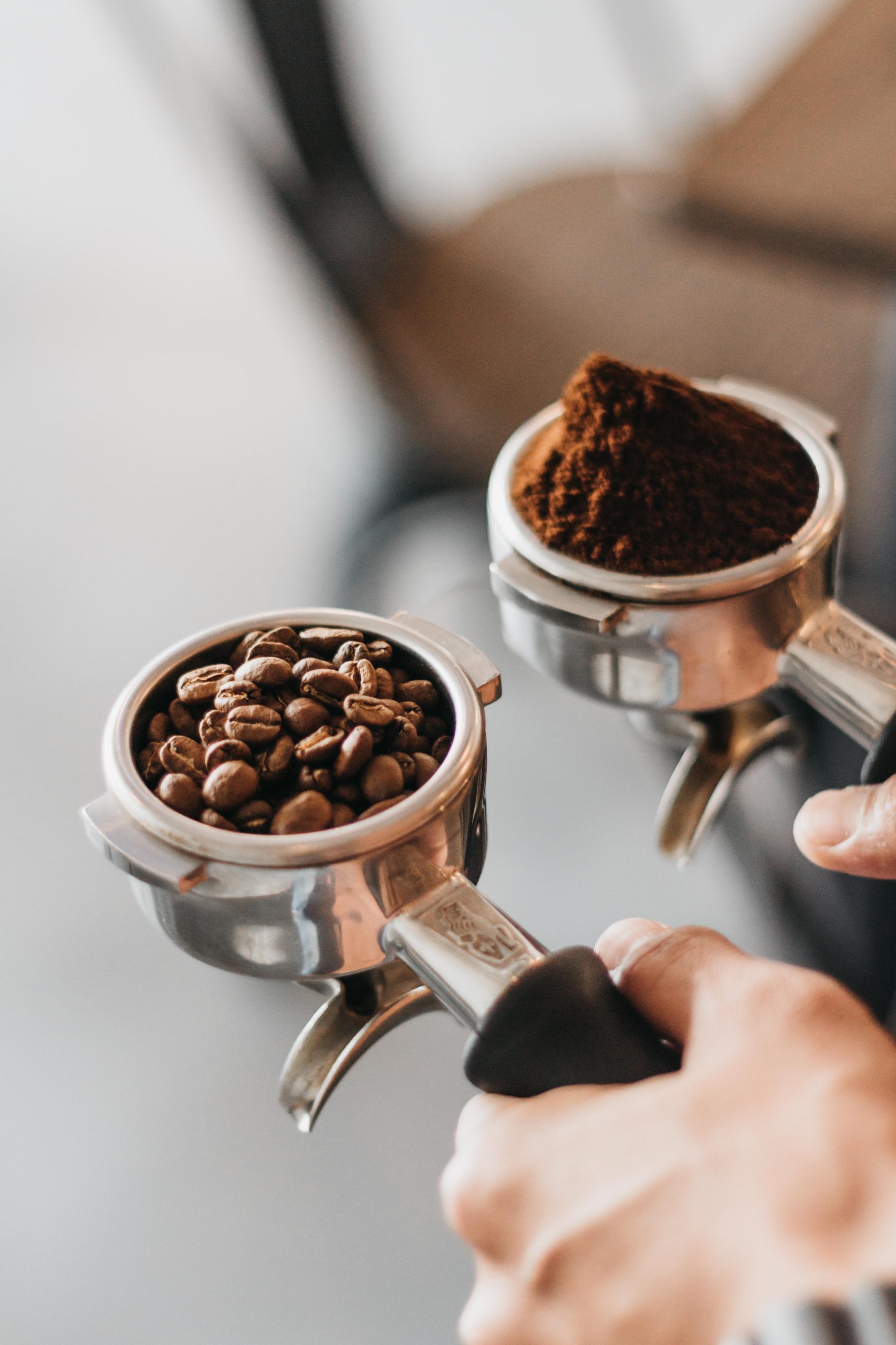Brewing great coffee every single day means taking care of your beans and your machine. Here are the 4 errors coffee shops make that impact coffee quality, as featured in THE PERFECT DAILY GRIND.
by Paul Golding, Paradox Head Roaster

As a coffee shop owner, customers will rely on you to serve them great coffee every single day. While buying the right beans is a great way to start, how you look after your coffee is just as important.
Coffee changes from the minute it’s roasted to the second it’s drunk. There are a number of factors that affect how your coffee will taste when brewed. This is why you have to do everything you can to control and maximise its quality.
Here are four common errors coffee shops make that can impact coffee quality – and how you can avoid making them.
ERROR #1 – STORING YOUR COFFEE INCORRECTLY
Coffee should be stored in a dark, dry, and cool area where it won’t be disturbed. Billy Toskas is the owner of Billy’s Bar Espresso in Maroubra, Sydney, and as his coffee shop goes through 150kg of coffee weekly, he’s aware of how important storage is for roasted coffee.
He stores his coffee in one-way valve bags which are kept in an underground room at a stable temperature. Billy says: “We never keep the bags where they can be exposed to the sun or the heat from the kitchen gear. This just overheats the coffee; it can get oily, and develop flat, baked flavours.”
How you store your coffee may also change as the weather does. For example, in Sydney, there can be significant temperature fluctuations between the summer and winter, which impacts how Billy stores his coffee. “We started resting the coffee for two weeks before use instead of one in colder weather. We noticed that when it’s cold, the coffee starts brewing like it’s way too fresh if we only rest it for five to seven days.”
However, not all coffee shops will have access to dedicated, temperature-controlled storage space. If you don’t, then it’s important that you just keep your coffee away from exposure to extreme heat, cold, moisture, and sunlight. I’ve seen coffee shops experiencing coffee quality issues and tracing the problem back to storing the coffee in a hot van, near a kitchen cooking area, or in a cupboard next to a heater. Avoiding such conditions will be easy enough for most coffee shops.
ERROR #2 – NEGLECTING DAILY EQUIPMENT MAINTENANCE
 Coffee shop espresso machines are complex pieces of equipment. That’s why regular maintenance is so important. Not only will this help you to avoid costly repair visits from technicians, your equipment will also last longer.
Coffee shop espresso machines are complex pieces of equipment. That’s why regular maintenance is so important. Not only will this help you to avoid costly repair visits from technicians, your equipment will also last longer.
Paul Martin is the Technical Manager at United Supplies in Sydney, a business that supplies and maintains espresso equipment. He says: “The number one cause of espresso machines breaking down is lack of basic maintenance. The 5000th shot you brew should be as good as the first, provided the machine is well taken care of.”
He recommends combining expert care with day-to-day staff care. While the servicing and parts replacement dates for every machine will differ, Paul says a technician should inspect, clean, or replace the machine’s shower screens, group heads, seals, steam wand, grinder blades, and grinding chamber twice a year. He adds that the machine’s boiler safety parts, flow meters, and solenoid valves will require an annual inspection.
Creating regular processes for your baristas to follow will help get them into the habit of performing necessary maintenance. According to Paul, this can include:
- Performing a two-second flush of the grouphead after every brew to remove residue.
- Knocking out the filter basket after shots to keep coffee from baking into the machine.
- Backflushing the group heads with cleaner and washing the portafilters daily.
- Keeping the steam wand free of milk crust after each use.
- Washing the grinder hoppers and vacuuming the grinders daily to remove old coffee.
- Removing and cleaning the shower screens several times a week.
- Not storing liquids or food on top of the machine to prevent any damaging leaks.
- Regularly tasting the coffee so you can pick up on issues as soon as possible.
Paul admits while some of these tasks might be challenging and take time to get used to, they are a must. “For anyone serious about producing good coffee, all of these are critical to… avoiding costly breakdowns.”
ERROR #3 – IGNORING YOUR ESPRESSO MACHINE BREW TEMPERATURE
Knowing your espresso machine’s water brewing temperature is important – but without specialised equipment, you might not be able to pinpoint the exact figure. While some machines allow you to set the temperature for each grouphead, these settings can be accidentally changed or may not be optimised for the coffee you’re brewing. This will impact the quality of your coffee.
The water brewing temperature affects how quickly the coffee extracts, and how many flavour compounds are released. Different drinks or beans might require different brewing temperatures for optimal extraction.
Coffee trainer Melita Ferraro says it’s common for different blends to have different optimal brewing temperatures – even on the same machine. If you aren’t sure if you’re working with the best temperature for the coffee you brew, she recommends tasting it.
“If your coffee is not quite right – perhaps it lacks sweetness or body or sourness is creeping in – check your water temperature,” Melita says. “You could find that an extra 1 or 2 degrees either side will make the difference, and suddenly the coffee just comes alive.” Taste-testing should be done by your team, and with your coffee supplier if possible.
Melita warns that the ambient temperature of your coffee shop could also affect your results, so this should be taken into account. “Cold air blowing onto the coffee machine in winter can alter the brewing temperature downward and cause under-extraction.”
If your machinery doesn’t let you manually set a water brewing temperature, then make sure its boiler is working correctly and is scale-free. Beyond that, you should also have a technician use an espresso machine thermofilter or something similar to regularly check the exact brewing temperature.
ERROR #4 – NOT TESTING YOUR WATER QUALITY
A flavoursome brew starts with clean, oxygenated water that is close to a neutral pH as possible. Water often contains organic particles, sediment, and other substances which can negatively affect your coffee’s taste and should be filtered out before brewing.
Your water also needs to have minerals like calcium, magnesium, and bicarbonate to extract the coffee’s flavour effectively. Too many of these minerals will create limescale in your machine, and may leave customers with a chalky or dull coffee. Too little, however, may produce a coffee that tastes sour or vinegary.
Installing specialised filters that use physical and active carbon filtration or reverse osmosis will be beneficial. However, as the chemical characteristics of water vary heavily from area to area, you should test your water, too. Finally, make sure that you’re using the right filtration system, and that you properly and maintain it. If you don’t regularly replace your filters or set up your system to remineralise your water, the quality of your coffee could decrease.
Making time to implement quality control measures can be difficult when you’re running a coffee shop. However, quality issues that come out of nowhere can be frustrating if you don’t know where to look. If you make sure you’re proactive about keeping quality high by avoiding these four common errors, you can guarantee your customers a better coffee experience.